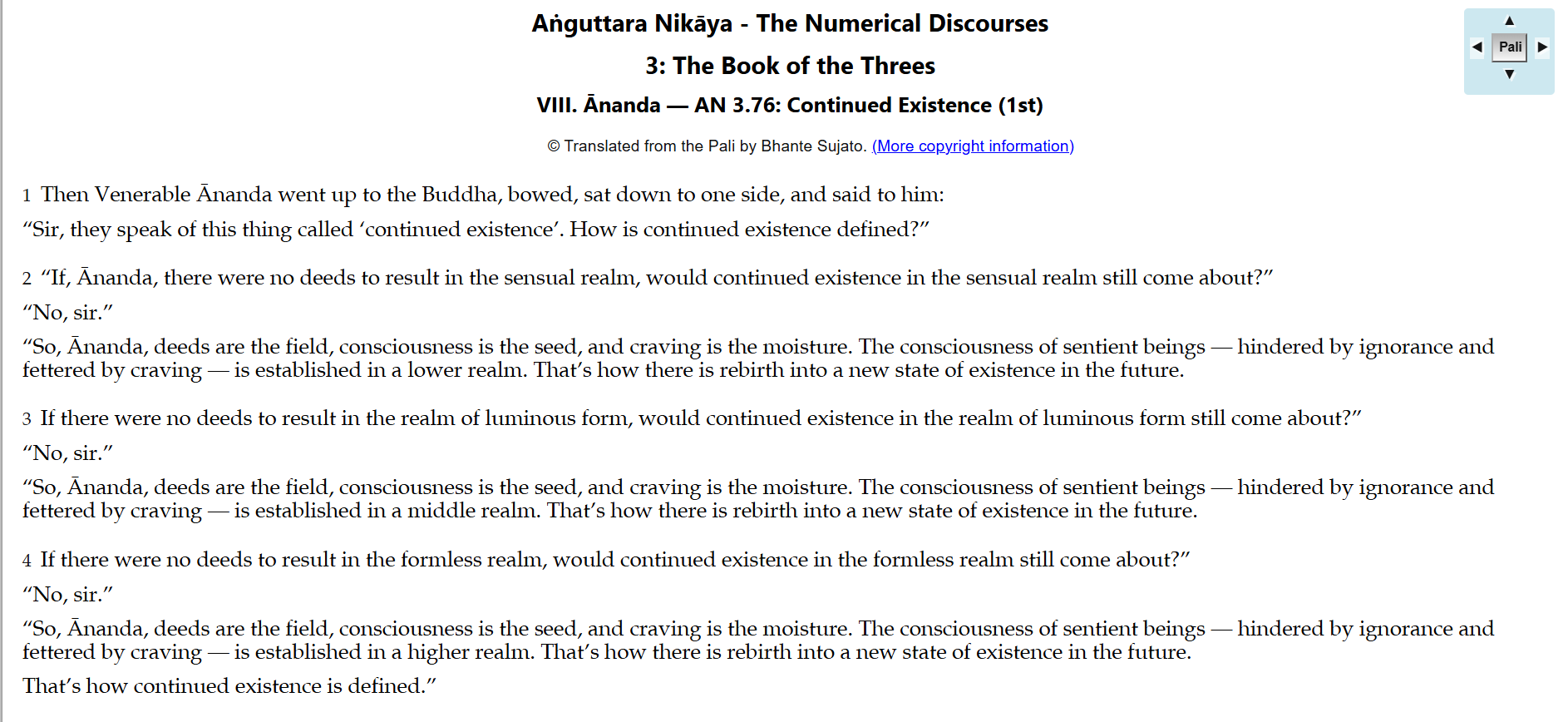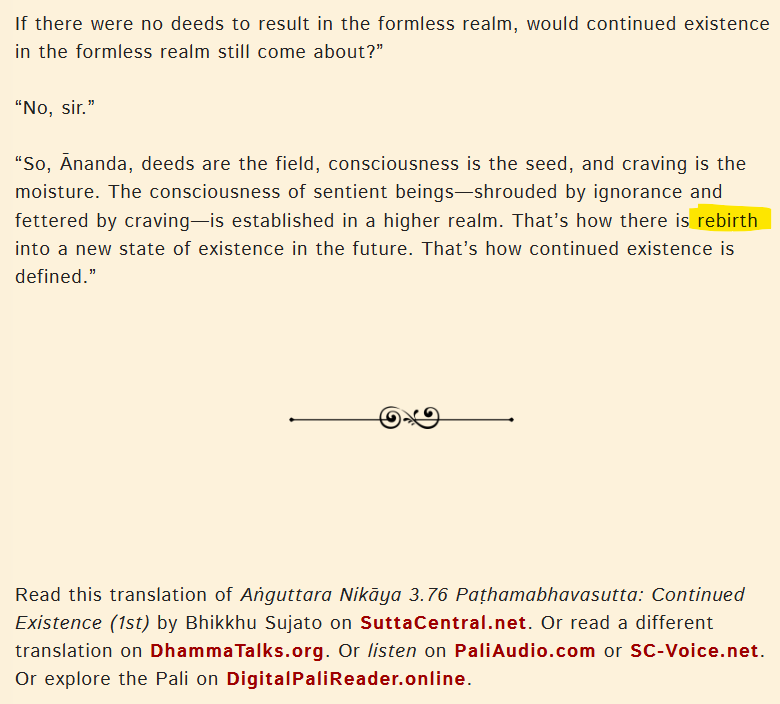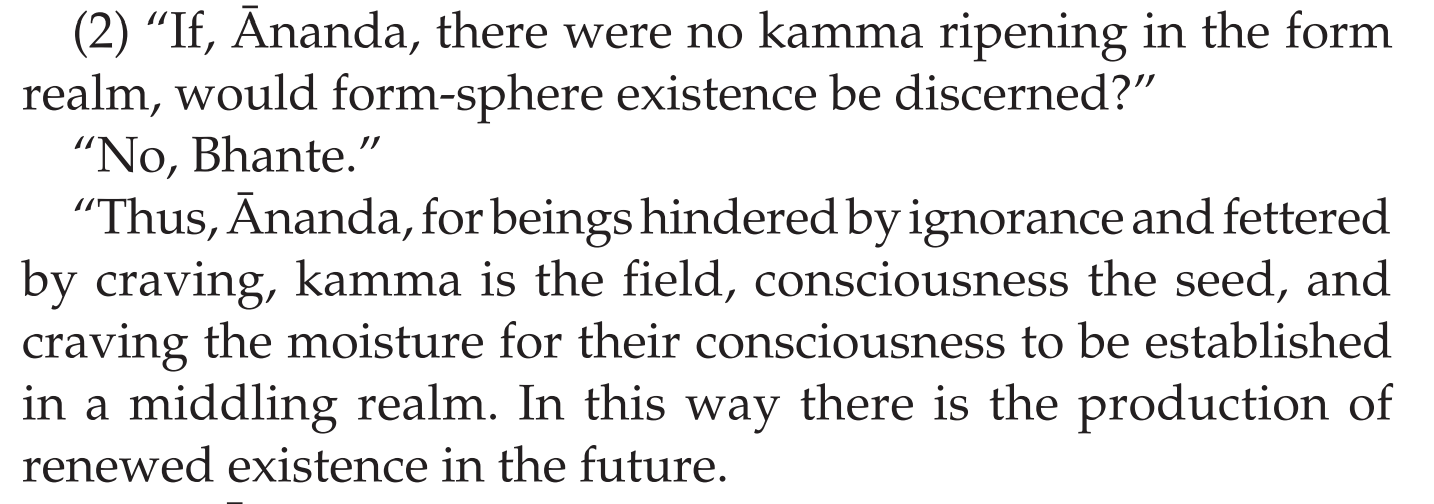I read the [following](https://buddhism.stackexchange.com/questions/53819/what-are-the-major-deviations-from-the-buddha-s-original-teachings-in-later-budd#comment88883_53821) on the internet:
> `new scholarly Western fads particularly created by the Australian
> Ajahn Brahm/Sujato sect and also embraced by American Bhikkhu Bodhi.`
> There's no need to insult and smear the Sangha. Have some integrity,
> your answers referenced the translation works by these reputable
> scholars, yet at the same time you insinuate and display contempt at
> them
Below is two translations of AN 3.76 by Sujato. The 1st is how I recall the translation was for a number of years:
 Repeat of the above, otherwise click on the above to expand:
Repeat of the above, otherwise click on the above to expand:
 The 2nd translation by Sujato below is what I surprisingly read for the first time, just now. My impression is Sujato recently changed his translation, including replacing the translation of "**re**birth" with "**re**generation".
The 2nd translation by Sujato below is what I surprisingly read for the first time, just now. My impression is Sujato recently changed his translation, including replacing the translation of "**re**birth" with "**re**generation".
 Next is Thanissaro:
> Ananda, if there were no **kamma ripening** in the sensuality-property, would sensuality-becoming be discerned? Thus **kamma** is the field, consciousness the seed, and craving the
> moisture. The consciousness of living beings hindered by ignorance &
> fettered by craving is established in/tuned to a lower property. Thus
> there is the production of renewed becoming in the future.
Next is Bhikkhu Bodhi:
Next is Thanissaro:
> Ananda, if there were no **kamma ripening** in the sensuality-property, would sensuality-becoming be discerned? Thus **kamma** is the field, consciousness the seed, and craving the
> moisture. The consciousness of living beings hindered by ignorance &
> fettered by craving is established in/tuned to a lower property. Thus
> there is the production of renewed becoming in the future.
Next is Bhikkhu Bodhi:
 Which translation of AN 3.76 is correct and what are the implications of these translation variations?
Which translation of AN 3.76 is correct and what are the implications of these translation variations?
 Repeat of the above, otherwise click on the above to expand:
Repeat of the above, otherwise click on the above to expand:
 The 2nd translation by Sujato below is what I surprisingly read for the first time, just now. My impression is Sujato recently changed his translation, including replacing the translation of "**re**birth" with "**re**generation".
The 2nd translation by Sujato below is what I surprisingly read for the first time, just now. My impression is Sujato recently changed his translation, including replacing the translation of "**re**birth" with "**re**generation".
 Next is Thanissaro:
> Ananda, if there were no **kamma ripening** in the sensuality-property, would sensuality-becoming be discerned? Thus **kamma** is the field, consciousness the seed, and craving the
> moisture. The consciousness of living beings hindered by ignorance &
> fettered by craving is established in/tuned to a lower property. Thus
> there is the production of renewed becoming in the future.
Next is Bhikkhu Bodhi:
Next is Thanissaro:
> Ananda, if there were no **kamma ripening** in the sensuality-property, would sensuality-becoming be discerned? Thus **kamma** is the field, consciousness the seed, and craving the
> moisture. The consciousness of living beings hindered by ignorance &
> fettered by craving is established in/tuned to a lower property. Thus
> there is the production of renewed becoming in the future.
Next is Bhikkhu Bodhi:
 Which translation of AN 3.76 is correct and what are the implications of these translation variations?
Which translation of AN 3.76 is correct and what are the implications of these translation variations?
Asked by Paraloka Dhamma Dhatu
(46906 rep)
Sep 1, 2025, 11:57 AM
Last activity: Sep 2, 2025, 10:25 AM
Last activity: Sep 2, 2025, 10:25 AM